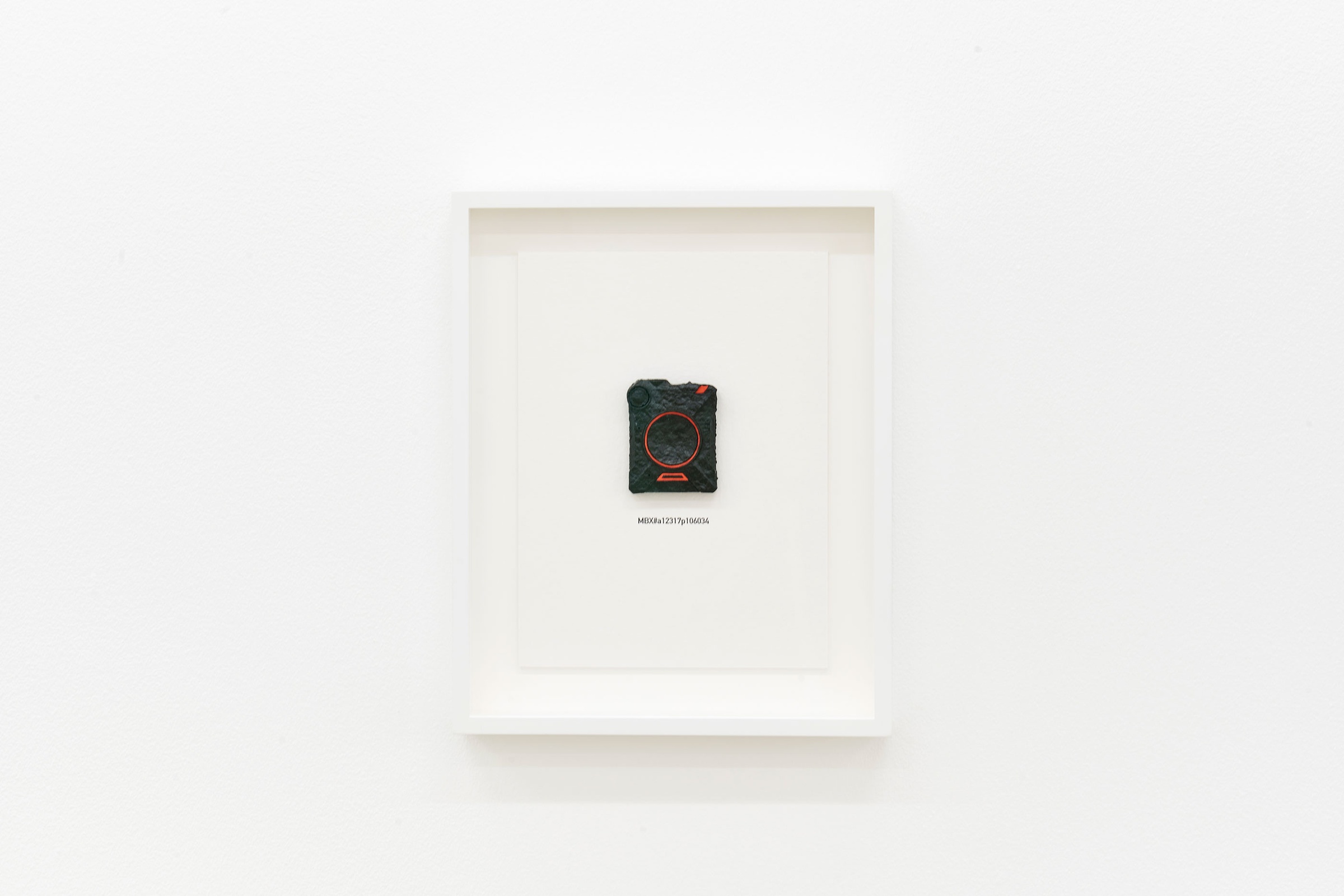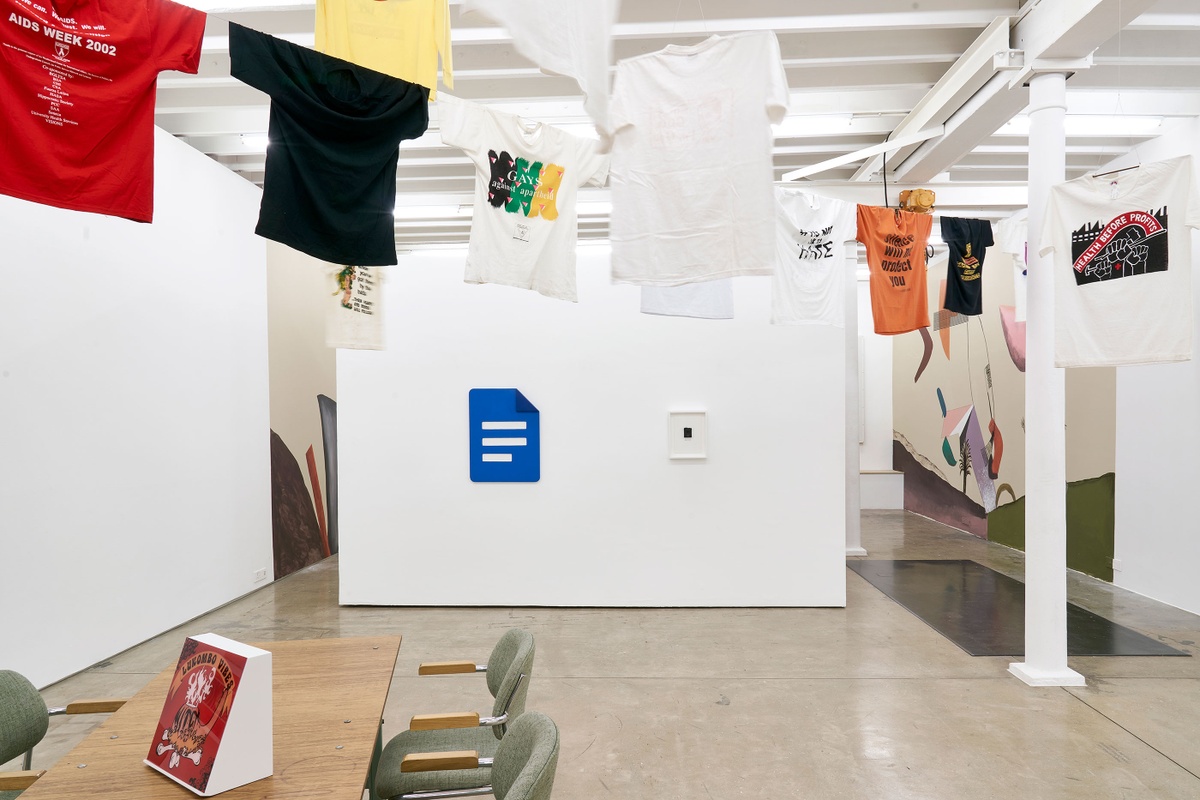Mark Bradford

“What is the purpose of an image?” Bradford asks. The question, posed in the context of his Life Size project, invites reflection on issues of visibility, policing, and profiling. The work is at first an ambiguous offering, appearing as a worn relic from an earlier technological age. It is, in fact, a paper cast taken of a Los Angeles policeman’s bodycam, marked by years of use. “There’s this idea that a camera will protect its citizens,” Bradford says, “but there are so many ways to interpret truth.”* For all the many mechanical eyes that keep watch, from surveillance cameras to mobile phones, the American criminal justice system remains intricately and intractably flawed. Bradford’s object is one of material tension – an armoured, mechanical device precisely reproduced in layers of paper; the indestructible rendered fragile, its heavy implications held in weightless form.
*Produced in support of the Art for Justice initiative, proceeds from the sale of the editioned work contribute to career-development opportunities for people transitioning out of prison.
b.1961, Los Angeles
“The source material comes from the world,” Mark Bradford says. “I drag it into the studio, and I beat it into some form of beauty...demanding that even though the world is a violent place...there’s also a magic and an alchemy that can happen.” Described as an abstract artist, Bradford resists the late-modernist formulation the medium is the message. “Race, gender and class will always cling to the material,” he says. The stuff of life – its political, social and economic tensions, and histories – is transcribed in the hair foils, streetside advertisements, salvaged plywood fencing, and discarded newsprint that he reimagines in large-scale paintings and installations. His ‘social abstraction’ invites a more oblique engagement with Black American life, insisting on a certain opacity rather than more didactic figuration. In works of layered material and meaning, he enacts a symbolic withholding, necessitating an associative rather than prescriptive engagement with his painted surfaces. “I have the right to go to a racially charged site and decide how much I’m going to give you,” he says to the implied viewer. “And how much I’m going to keep for myself.”
